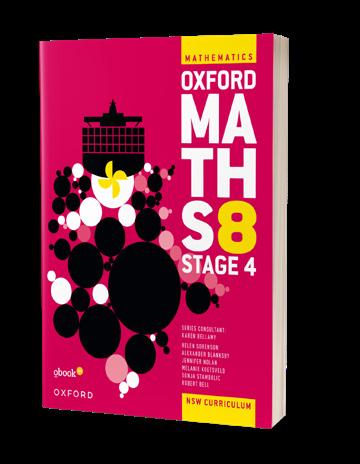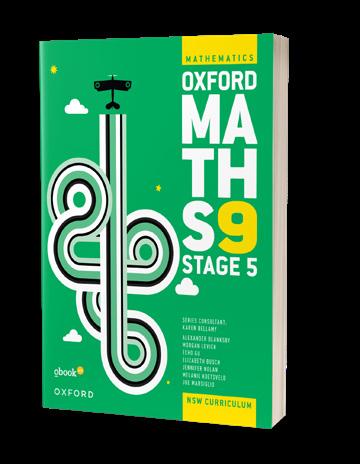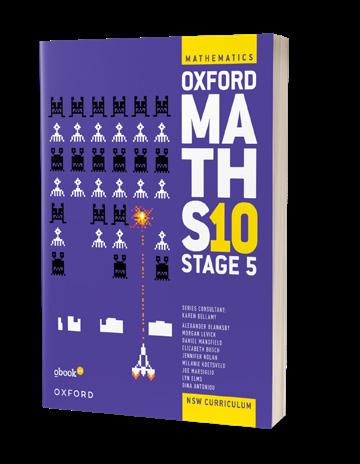Knowledge and Skills Gap Report 2022, updated 2024
Solving the knowledge and skills gap in Australian secondary mathematics classrooms
The latest research with strategies to help us close the gap

 By Lee Walker, Oxford University Press
By Lee Walker, Oxford University Press
WITH CONTRIBUTIONS FROM:
Janine Sprakel, Teacher, Teacher Educator, formerly Australian Maths Trust
Kim Beswick, University of New South Wales
Alex Blanksby, Mathematics Educator & Author
Annie Facchinetti, Literacy & Mathematics Educator, Xavier College
Dr Rhonda Faragher, The University of Queensland
Patrick Mete, Mathematics Teacher, Haileybury College
Peter Sullivan, Emeritus Professor, School of Curriculum Teaching and Inclusive Education, Monash University
Simone Zmood, Monash University
Morgan Levick, Mathematics Teacher, Nossal High School
The research: Understanding the skills gap
We unpack the skills gap through Oxford University Press’ latest research, reviewing NAPLAN performance, our falling PISA results and the Trends in International Mathematics and Science Study results. We conclude with a summary of the core issues teachers face in closing the skills gap.
Solving the problem: Articles to support improvement
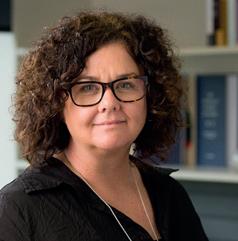
Foreword
Lee WalkerPublishing Director, Oxford University Press Australia & New Zealand
As the future of work becomes more STEM-focused, mathematical knowledge and skills have been defined as critical to future life chances. Research shows that life and work in the 21st century requires higher levels of mathematics and numeracy (Tout, 2020, p. 2). The rapidly evolving nature of knowledge, work and technology is demanding stronger understanding, reasoning, and strategic and problem-solving skills, and the National Council of Teachers of Mathematics in the USA (2017, in Tout, 2020) asserts that, in the 21st century, mathematics is at the heart of most innovations in the information economy.
However, many Australian students are failing to acquire a knowledge and skills repertoire that is at pace with their level of schooling and are falling behind in their mathematics learning. With graded curricula, this problem can be exacerbated as they progress through their years of education.
This research paper presents teacher responses about knowledge and skills gaps in Australian students’ mathematics knowledge; 94% of teachers surveyed are concerned about the gap following the transition from primary to secondary school, and almost all teachers believe that the gap identified in Year 7 will have consequences for students’ longer-term learning.
 Janine Sprakel
Janine Sprakel
Teacher, Teacher Educator
The future of work is problem solving. Our students will need to consider and solve such problems as food and water supply, the effects of climate science, new challenges in health and wellbeing and the issues related to sustainably supporting a growing population, including personal safety, transport, engineering and architecture. Problem solving is at the very heart of being human and surviving together on this planet.
In our schools, gaps in knowledge have always existed and are likely to always be with us. That’s the nature of teaching and learning. With the addition of negative public perceptions of mathematics feeding poor self-image in many of our students and in some teachers, we in education have a great deal to work through. Yet, there are actions that individual teachers, school administrations, school jurisdictions and governments can take. The following articles demonstrate opportunities to build resilient and engaged problem solvers with equity, diversity and student voice at the core of what we do.
If we value existing teacher expertise and support teachers by investing in professional learning, we will grow capacity. If we help teachers know their students by providing time to understand and make good use of available data , we will know what works and what does not. If we source good, challenging problems and plan for a gradual release of them in the classroom setting by thinking about how the learner will tackle each concept, we can grow engagement and confidence. If we assist students to build their skills slowly with hands-on materials and appropriate language, we are on our way to enhancing student experience. If we consider all learners and make learning that fits their needs, instead of the other way around, we are truly valuing individuals and their trajectory through our schools.
Solving the knowledge and skills gap in Australian secondary mathematics classrooms
Oxford University Press Australia & New Zealand (OUP) conducts thought leadership in partnership with Australian and international educational experts, subject associations and classroom teachers. This paper presents research about the knowledge and skills gap in Australian mathematics classrooms.
Specifically, the paper looks at:
• the transition from Year 6 to Year 7
• differentiating teaching for different learning needs
• developing problem-solving skills for the real world
• mathematics anxiety
• the impact COVID-19 and remote learning has had on students’ learning.
Complementing this paper is a selection of articles written by some of Australia’s leading mathematics educators, who provide some tangible implications for teaching to help address knowledge and skills gaps:
• Mathematical problem solving (Janine Sprakel)
• Learning and liking mathematics (Kim Beswick)
• The affordances of differentiation (Alex Blanksby)
• Keeping your hands on maths progression (Annie Facchinetti)
• Diverse learners – not the problem, they are the solution! (Dr Rhonda Faragher)
• The importance of being successful in mathematics (Patrick Mete)
• Incorporating mathematical challenges into teachers’ repertoires (Peter Sullivan)
• The importance of differentiating mathematics teaching for individual learning needs (Simone Zmood)
• Building confidence using formative assessment (Morgan Levick)
The Oxford University Press research
In early 2021, OUP surveyed 164 teachers of Years 7–12 students from around Australia.
• There was a fair representation of schools from each state and from the government, Catholic and the independent sectors, except for the Australian Capital Territory, which was not represented in the survey responses.
• Representation of teachers of each level was evenly spread.
• Almost 90% of teachers surveyed have been teaching mathematics for more than 10 years and have a tertiary mathematics and/or science qualification.
• More than 80% of respondents said they feel equipped to address gaps in students’ understanding of key mathematical concepts.
Australian students’ achievement trends in mathematics
The National Assessment Program – Literacy and Numeracy (NAPLAN)
The National Assessment Program – Literacy and Numeracy (NAPLAN) achieved mixed results in 2022. What is important to reflect on is that the proportion of students in the bottom two bands for numeracy increased significantly across all year groups between 2018 and 2022. About 21% of year 7 students were in the bottom two bands for numeracy in 2022, up from 16% in 2018 and the proportion of year 3 students increased to 16% from 13%.
Programme for International Student Assessment (PISA)
Australia’s results in the most recent Programme for International Student Assessment (PISA, 2022) show that they have steadied since 2018. However, they also reveal that just over half of Australian students achieved the National Proficient Standard in mathematics – 51% – so a significant number are failing to demonstrate they have more than basic skills (ACER, 2023). And while Australia’s global ranking improved in 2022, thanks to other countries dropping down the list, overall our performance has declined since the early 2000s (ABC, 2023).
The Trends in International Mathematics and Science Study (TIMMS)
Conducted every four years since 1995, the Trends in International Mathematics and Science Study (TIMSS) explores how well Year 4 and Year 8 students have mastered the factual and procedural knowledge taught in school mathematics (and science). In 2019, around 580,000 students in 64 countries were tested, including 14,950 Australian students from 571 schools.
The 2019 results showed that Australia’s achievement in Year 8 mathematics has improved relative to other countries since the 2015 assessment, however, Year 4 mathematics achievement has not changed since 2007. Between 68% and 78% of Australian students achieved the TIMSS Intermediate international benchmark compared to more than 90% of students in the highest achieving country, Singapore, so there is still tail of underachievement that needs to be addressed (ACER, 2020).
Australia vs the OECD in mathematics
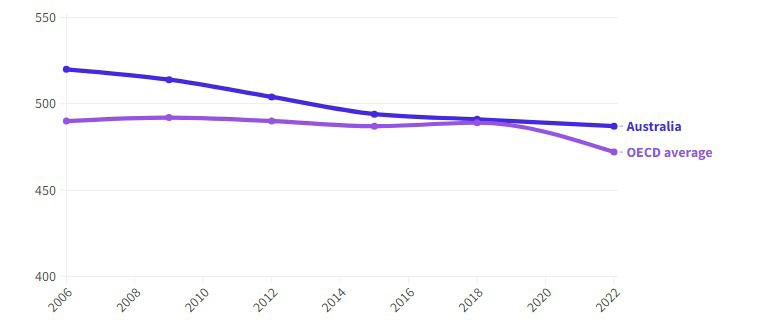
Source: Australian Council for Educational Research, Australian Institute of Health and Welfare, 2023.
OUP research indicates a mathematics knowledge and skills gap across Years 7 to 10
Almost 94% of teachers surveyed by OUP observed a mathematics knowledge and skills gap following students’ transition from primary to secondary school, and almost all teachers surveyed think that the gap identified in Year 7 will have consequences for students’ longer-term learning.
‘Students are coming from primary school without fundamentals such as knowing their multiplication tables. They have no concept of number and reasonableness of results. They do not predict answers through estimation to understand the reasonableness of ‘calculator’ answers.’ (Teacher, survey respondent)
Consequently, this skills gap is impacting learning and teaching, and effects as reported by teachers surveyed include:
• reduced student confidence and increased anxiety (86%)
• reduced student engagement with mathematics (77%)
• reduced student achievement (73%)
• increased teaching time (72%)
• negative impact on student performance (65%).
Impact of knowledge and skills gap on teaching
R ed uce d stu den t c on fid enc e a nd increas ed a nxi et y
Ne gativ e im pact o n st uden t perfor manc e
Re duce d st uden t ac hiev emen t Re duc ed st ude nt en gageme nt wit h mathemat ic s
Overwhelmingly, teachers’ comments about the impact on the skills gap referred to the need to teach to a wide, differentiated classroom of students:
• ‘Increased preparation time due to need to differentiate wider.’
• ‘Increased preparation in trying to get work that is engaging and matches their ability level.’
• ‘More differentiation required.’
• ‘Increased need for differentiation in planning teaching and assessment.’
• ‘Very large range of abilities in classroom and subsequently difficult to cater for all.’
• ‘A huge divide forms between those students who come in with good skills already, and those who don’t. It can make it difficult to teach all students with such a vast difference of abilities.’
Teachers’ views about the size of the skills gap ranged from 1–5+ years, with the widest skills gap in Years 7 to 9.. Moreover, the OUP survey revealed low teacher confidence in preparedness of students moving into Year 10 and senior mathematics:
• Year 7: Almost 34% of responses indicated that the skills gap in classrooms was five or more years.
• Year 8: Almost 28% of responses indicated that the skills gap in in classrooms was five or more years.
• Year 9: 30% of responses indicated that the skills gap in in classrooms was three or more years.
• Year 10: Almost 27% of responses indicated that the skills gap in classrooms was five or more years, and 50% believe that most Year 10 students will not have the skills required to commence senior mathematics studies.
‘The spread of student levels has increased hugely over the past 15 years to a point that it is virtually impossible for a single teacher in a classroom to successfully engage [all] students…’. (Teacher, survey respondent)
Issues that teachers face when addressing gaps in students’ mathematical understanding
The transition from Year 6 to Year 7
Many secondary teachers who responded to the OUP survey made extra effort to comment on the range of knowledge and skills students bring from primary school:
• ‘We draw our students from a wide range of primary schools… students have been taught some topics… but other topics may not have been taught.’
• ‘More remedial work to teach concepts from primary.’
• ‘Difficult to cover the content at year level standards when one is constantly trying to “catch them up”.’
One teacher expressed concern for students’ futures:
• ‘Reduced outcomes for their futures and behavioural issues, puts them off maths and getting certain jobs in the future.’
Differentiating teaching for different learning needs
As Masters (2005) states, ‘learning is enhanced when learning opportunities are matched to individuals’ current levels of knowledge, skill and understanding, so classroom activities are likely to be most effective in raising achievement levels if they are differentiated, in other words, if teachers recognise the wide variation in children’s levels of progress; if they identify individuals’ interests and current levels or attainment; and if they expect different kinds of learning from different students’. While more than 80% of respondents to the OUP survey said they feel equipped to address gaps in students’ learning, more than 96% believe they do not have enough time to teach and more than 50% claim they lack knowledge of remedial teaching methods.
‘I am a science teacher who also teaches mathematics to the Year 10 level. While I am very competent mathematically, I feel I do not have the nuance to teach and differentiate mathematics to the fullest of my capacity...’ (Teacher, survey respondent)
‘I can address the gaps that are a year or two below Year 7 level. But if it’s content several years below then I’m not sure how to teach it appropriately.’ (Teacher, survey respondent)
Issues preventing teachers from addressing gaps in student understanding
Additionally, nearly 60% of teachers say they lack resources to support their teaching, with more than 90% of teachers saying that they do not have the right or enough resources to cater for differentiated learning and the wide knowledge and skills gap that they are required to teach to in their classrooms.
Resources required to address the knowledge and skills gap
Developing problem-solving skills for the real world
When looking at how assessment frameworks are designed for mathematics, for example how mathematical literacy assessment is assessed in PISA, they give emphasis to:
• the processes associated with tackling real-world problems in context
• transforming the problem mathematically
• making use of mathematical knowledge to solve the problem
• evaluating the solution in the problem’s original context (Thomson, et. al., 2019, p. 21).
Thomson, et al (2019, p. 21) assert that ‘if students can learn to do these things, they will be much better equipped to make use of their mathematical knowledge and skills throughout their lives’. When asked about the types of resources teachers say they need to differentiate their teaching and ensure students were more successful in their assessment performance, more than 91% said they need problem-solving activities with different entry points (and exit points).
Mathematics anxiety
Mathematics anxiety is widely studied for its negative impact on learning and potentially exacerbates the knowledge and skills gap for many students. According to Thomson, DeBortoli and Buckley (2013), 25% of 15-year-old students report feeling helpless doing a mathematics problem, and researchers estimate that, overall, 6% to 17% of the population experience maths anxiety (Dowker, Sarkar & Loo, 2016). Mathematics anxiety, when ‘…anticipating or completing mathematics tasks, is reported widely by Australian students’ (Thomson, DeBortoli & Buckley, 2013, in Buckley, 2020, p. 3), and students ‘who consistently experience mathematics anxiety when engaging with mathematics are more likely to avoid mathematics subjects, courses and careers’ (Buckley, 2020, p. 3).
Teachers who responded to the OUP survey feel strongly that reduced confidence and increased anxiety are consequences of students not achieving in mathematics. Almost 86% of survey respondents agree that mathematics anxiety in students impacts their teaching the most.
The impact COVID-19 and remote learning has had on students’ learning
Based on research conducted by the Centre for Independent Studies, parents believe ‘around 1.25 million students (over 40%) across New South Wales, Victoria and Queensland may have fallen behind while learning at home’ during the COVID-19 pandemic (Fahey, 2020; Fahey & Joseph, 2020). According to Sonnemann & Goss (p. 3, 2020), ‘students tend to learn less when they are not in regular class, and new data from Australian teachers shows this has likely to have been the case during the COVID-19 lockdowns’.
COVID-19 and remote learning has had an impact on students’ progress according to 73% of teachers surveyed, with more than 80% observing negative impacts on learning. Additionally, more than 50% claim that it has impacted students’ transition from Year 6 to Year 7. The areas of learning that had the most noticeable impacts were:
• reduced student engagement (85%)
• hampered student progression through the course (70%)
• reduced student achievement and/or performance (69%)
• reduced student confidence (60%).
Impacts of COVID–19-induced remote learning on student progress
Hegarty (2020) asserts that ‘the challenge of transition to secondary has always been a two-headed beast – student anxiety about the prospect of secondary school; and student learning loss of the summer break’.The addition of weeks of remote learning in 2020 might have resulted in greater learning loss and transition anxiety, which has the potential to significantly impact progress in mathematics learning progression for the 2021 Year 7 cohort.
Teachers claim remote learning had a negative impact on students’ learning due to:
• reduced opportunities for one-to-one instruction
• equity issues and lack of access to learning content, technology, and the Internet
• students finding it challenging to communicate and engage in an online environment
• teachers finding it challenging to monitor students’ progress and their depth of understanding
• teachers struggling to monitor student’s health and wellbeing and impact on levels of engagement.
Conclusion
This paper presents several potential reasons why there is a knowledge and skills gap in Australian secondary mathematics classrooms, and the desire of teachers to best address the different range of ability levels.
OUP is grateful to the many teachers who responded to the survey, whose responses have made a significant contribution to this report and supported the current research about mathematics teaching in Australia, and who are strongly passionate about teaching mathematics and preparing their students for their futures.
References
Australian Broadcasting Commission (ABC), Long, C., 2023, ‘Australia is now in the world’s top 10 academic performers – but the data paints a complex picture, https://www.abc.net.au/news/2023-12-05/pisa-international-school-rankings-inmaths-science-reading/103185468.
Australian Council for Educational Research, 2019, PISA 2018: Australian Students’ Performance, ACER, 3 December, https://www.acer.org/au/discover/article/pisa-2018-australian-students-performance#:~:text=International%20 rankings,scores%20of%20countries%20and%20economies
Australian Council for Educational Research, 2020, Australia Lifts its Performance on Global Mathematics and Science Test, media release, ACER, 8 December https://www.acer.org/au/discover/article/australia-lifts-its-performance-on-globalmathematics-and-science-test
Australian Council for Educational Research (ACER), 2023, ‘PISA 2022: Australian student performance stabilises while OECD average falls’, https://www.acer.org/au/discover/article/pisa-2022-australian-student-performance-stabilises-whileoecd-average-falls.
Australian Council for Educational Research (ACER), Australian Institute of Health and Welfare, 2023, cited at https://www. abc.net.au/news/2023-12-05/pisa-international-school-rankings-in-maths-science-reading/103185468.
Australian Financial Review (AFR), Read, M. & McIlroy, T., 2023, NAPLAN scores go backwards despite billions in extra funding, https://www.afr.com/policy/economy/naplan-scores-go-backwards-despite-billions-in-extra-funding-20230706p5dm5f.
Buckley, S., 2020, Mathematics Anxiety, Department of Education and Training, State of Victoria, https://www.education. vic.gov.au/school/teachers/teachingresources/discipline/maths/Pages/research_overcomingmathsanxiety.aspx#link11
Buckley, S., Reid, K., Goos, M., Lipp, O. V. & Thomson, S., 2016, Understanding and addressing mathematics anxiety using perspectives from education, psychology and neuroscience, Australian Journal of Education, vol. 60, no. 2, pp. 157 – 70, ACER, Camberwell, Victoria
Fahey, G, 2020, Closures Undermined Education, The Centre for Independent Studies, 9 October, https://www.cis.org.au/ commentary/articles/closures-undermined-education/
Fahey, G. & Joseph, B., 2020, Parents’ Perspectives on Home-Based Learning in the COVID-19 Pandemic, The Centre for Independent Studies, 30 September, https://www.cis.org.au/publications/analysis-papers/parents-perspectives-on-homebased-learning-in-the-covid-19-pandemic/
Hegarty, C., 2020, Year 6 to 7: Answering the Transition Challenge, Headteacher Update, 21 June, https://www. headteacher-update.com/best-practice-article/year-6-to-7-answering-the-transition-challenge-maths-anxiety-learningloss-schools-1/228172/
Karp, P., 2019, Australian Students Maths Performance Falls to OECD Average in Worst Result Since 2000, The Guardian, 3 December, https://www.theguardian.com/australia-news/2019/dec/03/australian-students-maths-performance-falls-tooecd-average-in-worst-result-since-2000
Masters, G. N., 2005, Against the Grade: In Search of Continuity in Schooling and Learning, Australian Council of Educational Research (ACER), https://research.acer.edu.au/monitoring_learning/3
Sherwood, J., 2020, Here to Help with Year 7 Transition, Oxford Education Blog, Oxford University Press, https:// educationblog.oup.com/secondary/maths/transition-from-year-6-to-year-7?utm_source=rss&utm_medium=rss&utm_ campaign=transition-from-year-6-to-year-7
Sonnemann, J. & Goss, P., 2020, COVID Catch-Up: Helping Disadvantaged Students Close the Equity Gap, Grattan Institute, June
Thomson, S., De Bortoli, L., Underwood, C., & Schmid, M., 2019, PISA 2018, Reporting Australia’s Results. Volume I Student Performance, Australian Council for Educational Research (ACER), https://research.acer.edu.au/ozpisa/35
Thomson, S., De Bortoli, L., & Buckley, S., 2013, PISA in Brief: Highlights from the Full Australian Report: PISA 2012, How Australia Measures Up, https://research.acer.edu.au/ozpisa/14, Australian Council for Educational Research (ACER)
Tout, D., 2020, Evidence and Research in Numeracy and Mathematics, Department of Education and Training, Victoria State Government, https://www.education.vic.gov.au/school/teachers/teachingresources/discipline/maths/Pages/ research_connectionsbetweennumeracyandmaths.aspx
Mathematical problem solving
Janine Sprakel, Teacher, Teacher EducatorIntroduction
At the Australian Maths Trust (AMT), we believe that every student should have the opportunity to discover their full potential in mathematical problem solving in a way that is approachable, interesting, challenging, and creative. Problem solving is for everyone, not just for the mathematically capable student.
Our vision is to develop a nation of creative problem solvers, and we believe that enjoying the challenge of mathematics and algorithmics is the most effective way to get students there.
What is mathematical problem solving?
The solving of problems is inherent in mathematising. Participating in, using, and creating mathematics uses skills such as investigating, trialing, modelling, observing, abstracting, and constructing. The real world poses problems to solve with mathematics all the time and mathematics generates its own problems to solve with new mathematics growing from old.
Problem solving is a pedagogical approach, rather than an additional layer to curriculum. It gives students opportunities to work mathematically. If they never encountered problem solving, they may well learn sufficient mathematics to be considered successful. They may, however, never have the opportunity or develop the capacity to apply their mathematical understanding and almost certainly would struggle to apply understanding in a novel context.
Mathematical problem solving:
• is the application of mathematics in a novel context
• involves more than a plug and play of numbers into an algorithm
• is more than completing problems at the end of a chapter or online worksheet environment
• often covers a range of mathematical concepts
• takes time to solve, often in a multi-step approach
• can be collaborative as well as solitary
• includes communication about strategies, blockers, solutions and success and failure
• has a solution that is not immediately obvious
• may have many solutions, a single result, or no result at all
• provides an opportunity for the student to analyse, reason, abstract and generalise
• develops mathematical perseverance and cultivates creative thought
• may pose new problems or research directions.
The role of the teacher
The teacher plays a crucial role in setting up problems and in creating an environment where all students feel safe to explore and take mathematical risks. It isn’t enough to simply give some problems to the class and let them start work independently. The role of the teacher in the problem-solving classroom includes:
• setting up the exploratory and safe classroom environment
• sourcing problems and planning the session
• preparation prior to the session, including doing the problem(s) and preparing enabling and extending prompts
• making students aware of a variety of problem-solving strategies
• presenting problems to students
• modelling problem-solving practices to the class
• providing an environment for students to share strategies with their peers
• facilitating communication of strategies and solutions by noticing, listening, and responding to student strategies
• scaffolding and supporting students using enabling and extending prompts, calling on select students to communicate strategies
• promoting a dialogue around problem solving, and rewarding perseverance over the correct answer
• assessing student progress by making note of strategies, skills and dispositions.
Structure
Research on problem solving overwhelmingly supports a structured lesson, where the problem is posed to students, and its solution and resolution are carefully managed in a mix of independent work, classroom conversations and student sharing.
The AMT online teacher platform – Problemo –suggests the following structure:
• Launch: Understand the problem. Teachers ask students to read the question, and invite them to explain what is being asked in their own words. Discuss the key concepts and clarify terms that students are unsure of. Teachers need to have thought about the possible pitfalls for students in this question and consider how to address these.

• Solve – devise a plan and carry it out. The enabling prompts will be useful. The teacher should let students get to work as they circulate. The teacher is there to prompt, not solve the problem. The teacher should also notice any interesting strategies and solutions.
• Reflect – look back and check. Student strategies and solutions are carefully managed by the teacher in a class conversation, stringing the previous student responses together as the conversation progresses. Suggested reflection prompts include: Can you check that your answer is correct? Are there other possible strategies? Can the solution be generalised?
• Extend: Build on what students have learned and make use of appropriate extending prompts. This is a summary point. Allow time for consolidation where a similar task is posed, allowing students to apply their newly acquired skills.
• Connect: Apply what was learnt to the real world.
Problem-solving strategies
Teaching explicit strategies for solving problems in mathematics goes in and out of favour. However, most research asserts that it is worthwhile that students see, experience and discuss various strategies (as well as developing their own). The danger lies in being rigid about strategy implementation to the point that students are cognitively overloaded. A student who is wasting considerable mental energy trying to remember strategies is not successfully developing their own successful strategies and choosing when and how to invoke them.
The AMT mapped out strategies to help explain and understand the problem-solving abilities of students. These can be taught to students to help them become better problem solvers:
• Act it out
• Direct calculation
• Guess and check
• Interpret the context
• Logical deduction
• Look for a pattern
• Make a list or table
• Make a model
• Restate the problem
• Use a diagram
• Use a number sentence
• Use a rule or shortcut
• Work backwards.
Skills and dispositions
In addition to being an opportunity for students to employ newly acquired mathematical skills, problem solving is an opportunity for students to develop and strengthen a range of dispositions. One of the most important things for students to understand is that problem solving takes time. Many students (and some teachers) falsely equate finishing quickly with being good at maths.
A difficult trait to cultivate is mathematical grit, or perseverance. Carefully targeted problems help students to keep going even when they are feeling despondent, as does celebrating progress as well as success. Students need to see that communication, thinking and strategies are as important as the solution. It is the teacher’s
role to make sure that the solutions are just out of the student’s reach, but not too far lest they give up entirely.
Many students have very creative approaches to problem solving that should be encouraged. The teacher must be prepared for novel strategies and solutions from students and consider them carefully. Some problems will have more than one strategy that applies, and problems may have multiple solutions – or even no solution! The teacher’s role is to be open to these new ways of thinking, and to allow students to express them.
Schools implementing problem solving
The school context is key to successfully introducing problem solving. Supportive management and a culture of being open to new ideas helps teachers value and sustain the implementation. Although there are many steps management can take to build a problem-solving culture at school, a significant factor towards success is to allocate time and resources to growing teacher capacity through professional learning. Management can achieve this relatively easily by giving teachers the opportunities for:
• time for reflective practice with a researcher as a sounding board
• feedback to enhance teacher experience and embed skills developed
• growth in teacher confidence by allowing time to do mathematical problems
• building pedagogical knowledge by encouraging preparation time and implementation of enabling and extending prompts.

Issues
Gender
Historically, we have been led to believe that women and girls are less capable than men and boys with respect to mathematics. We now understand that there is no gender difference in ability. The ability differences between genders are less than the differences within them.
Skills before problems
How much skill development does a student need before meeting a new problem? Should the teacher give the problem first, and grow the skills as they are needed? Or is it best to teach the content and skills first and use the problem-solving session to consolidate? The optimal delivery lies between these two points. A problem before skills approach can be tricky to manage, lest some students have their already poor self-perception in mathematics confirmed by a too-hard problem. If the problem is too far out of reach the student will be turned off. Equally a problem that is too easy will not sufficiently extend the student and grow their skills and abilities. Often, a well-chosen introductory problem, that is engaging, is a point of entry to develop some specific technical skills. Or it may be that the specific problem can be solved but seemingly minor variants of it cannot.

Mindset
A student’s mathematical world view determines how they approach problem solving. This includes their self-belief, their view of the environment in which they are working, their feelings about the topic and their perception of mathematics and its worth. Interestingly, a great many students survive without a sound disposition towards mathematics and can perform remarkably well with only a procedural understanding.
The BIG four
These are the important things for teachers to remember when implementing problem solving in the classroom:
• Plan and prepare: Take some time to get to know the problem and plan for its use in the classroom. Do the problems yourself. Prepare enabling and extending prompts for students. Ask yourself, ‘What will students do with this problem?’
• Allow time: Allow time for students to attempt the problem and regularly allocate of time to work on problem solving.
• Strategies can grow student capacity: Expose the students to known strategies and encourage them to develop and articulate their own.

Janine Sprakel
• Develop mathematical grit and a growth mindset: By scaffolding student learning with enabling prompts and being aware of how they might tackle a problem, the teacher is helping to grow a positive mindset towards mathematics.
Janine is a trained primary school teacher and teacher educator, Janine has worked in schools across Australia to grow teacher capacity and enhance student engagement in mathematics.
Learning and liking mathematics
Kim Beswick, University of New South WalesDeclining mathematics achievement among Australian students is widely reported and of concern. At the same time, the undersupply of students taking up mathematics-related (i.e. STEM) post-school options is lamented (Timms, et al., 2018). These things are almost certainly connected: students are likely to enjoy what they feel successful at and are more likely to expend effort on things they like and hence achieve better outcomes (Jennison & Beswick, 2010). However, many students who achieve well in mathematics report not liking the subject.
According to the most recent Trends in Mathematics & Science StudY (TIMSS), for example, 74% of Australian Year 4 students reported liking to learn mathematics either very much or somewhat, but for Year 8 this number was just 50% (Mullis, et al., 2020). The same report shows that 75% of Australian Year 4 students reported being at least somewhat confident about mathematics and that this figure is 56% for Year 8. We should be concerned that a quarter of Year 4 students and half of Year 8 students do not like learning mathematics and that similar proportions of our students lack confidence in their ability to succeed in mathematics (Mullis et al., 2020). We need to be careful that attempts to address ‘gaps’ in students’ knowledge do not exacerbate this situation. Instead, we can address achievement and attitudes together.
Mathematics is not as hierarchical as you might think
It is possible to arrange the content of school mathematics in a logical sequence where one idea builds on another. This is what curriculum and textbook writers do. It is, however, false to say that a student has to understand everything taught in a given year to be prepared to learn the content of the next year. Learning trajectories or progressions are not linear and students’ progress may not be sequential. They are more like climbing walls than ladders (Confrey, 2018).
The important ideas of mathematics that underpin mathematical proficiency (ACARA) develop over time as they are revisited in a range of contexts. One of these is proportional reasoning, which is foundational to understanding topics that include fractions, decimals, ratios, trigonometry, scale, and probability. This means that, rather than labouring fraction algorithms in Year 7 because students appear not to have learned or not to have retained this primary school content,

teachers can be ready to address gaps in fraction understanding when they teach any of the topics that rely upon that knowledge. Capitalising on these teachable moments means that no student needs to suffer the humiliation of being remediated by doing less demanding or different content from their classmates, nor do students who have mastered this content need to be bored by unnecessary revision.
Year 8 students are not Year 4 students
Teachers do need to start from where the student is at and build from there. This does not, however, mean going back to the point in the curriculum, where the missing bit was taught and working from there. A Year 8 student who does not understand place value does not need to go back to Year 4 (or earlier) mathematics or to repeat all the place value learning that ideally would have happened in the interval. A Year 8 student is not cognitively, emotionally Time or socially the same as a Year 4 student. Whereas place value with whole numbers is necessarily developed over
several years in primary school and then extended to decimal numbers in the middle years, a student at the end of that period can grasp these concepts much more readily than a younger student, and especially if the need to know arises in a motivating context such as solving a worthwhile problem on which their peers are also working.
Mathematics lessons are part of students’ ‘real world’
Finding their place and feeling a sense of belonging among their peers is a powerful motivation for adolescents (Newman, Lohman & Newman, 2004). Few things are worse than standing out from their classmates and it is hard to imagine anything more damaging than feeling dumb or otherwise inadequate in front of one’s peers. Being able to work on the same tasks as their classmates, to engage in discussions about the same ideas, and to feel that they can make progress are essential for all students, especially in secondary school. These things are more motivating than tasks couched in contexts that may be relevant in the ‘real world’. The real world for students is school and their friends. It includes today’s mathematics class.
Many of the challenging behaviours that mathematics teachers encounter (e.g. inattentiveness, unwillingness to complete work, negative attitudes) are less likely when students perceive their teacher to be supportive (Ryan & Patrick, 2001). These behaviours have consequences for the young person that are preferable to feeling foolish in front of their peers. It is perfectly socially acceptable to ask, ‘When will we ever use this?’ but not to ask what is often the real question, ‘What does this mean?’ Challenging behaviour and questions about relevance can be signals that the mathematics is not making sense. They should be understood as indicators of the need for another approach to the topic, another explanation, or a conversation that focuses on what the teacher can do to help make the mathematics meaningful.
Assumptions about mathematics ability are often wrong
Beswick (2017) found that teachers sometimes infer lack of mathematical ability from such things as students’ negative attitudes to mathematics, unwillingness to attempt difficult tasks, being afraid of topics such as algebra, not asking for help, and being disruptive. None of these things necessarily mean anything about ability. Indeed, they could be attempts by students to protect themselves from feeling stupid. Responding by offering easy, low level tasks, and focussing on low level basic skills (Beswick, 2017), inadvertently fulfil these students’ fears and contribute to a cycle of disengagement.
Telling someone they are capable does not make them feel capable
Many teachers are aware of the powerful positive effects on effort and achievement of growth mindsets (Dweck, 2002) and self-efficacy, but no amount of verbal encouragement will help a student believe they are capable if they are offered less demanding tasks, segregated from higher achieving peers, or have their attempts to seek help met with sighs or shrugs. Simple things like the way a question is phrased make a difference. For example, asking, ‘Where did I lose you?’ instead of ‘Where did you get lost?’ communicates that the teacher is sharing responsibility for the difficulty rather than blaming it on something inherent in the student. Students know when their teachers really believe they are capable and respond accordingly (Archambault, Janosz & Chouinard, 2012).

Adolescents want to make their own choices
The transition from primary to secondary school comes at a time of tremendous change in students’ lives as they move from childhood to adolescence. Adolescents are keen to explore their identities, question norms, and develop and assert their independence (Ryan & Patrick, 2001). Mathematics teachers can exploit this by offering choices within safe boundaries. For example, students can decide how much practice they need, when they are ready for the most challenging tasks, how they might tackle a problem, the order in which they complete exercises, and how to present their solutions. It is the teacher’s role to support students to make choices that provide the sufficient challenge, check the understanding of all students (not just those judged less capable), and to draw students’ attention to powerful mathematical ideas.
Addressing achievement and attitudes together
Following are some things that teachers can do to support students’ achievement and the development of positive attitudes to mathematics:
• Resist the temptation to ‘help’ by offering easy work to students who seem to be finding the work difficult.
• Show not tell that you believe every student is capable of learning mathematics.
• Look beyond behaviour to deeper motivations.
• Provide tasks that are mathematically worthwhile and challenging, yet accessible for all students.
• Create a classroom climate in which not knowing or expressing lack of understanding is safe. Again, show not tell.
• Look for opportunities to address gaps as they become evident in the course of teaching year level content.
• Remember that everyone wants to learn.
References
Archambault, I., Janosz, M. & Chouinard, R., 2012, Teacher beliefs as predictors of adolescents’ cognitive engagement and achievement in mathematics, Journal of Educational Research, vol. 105, no. 5, pp. 319–28
Australian Curriculum, Assessment and Reporting Authority (ACARA) Mathematics proficiencies, https://www. australiancurriculum.edu.au/resources/mathematicsproficiencies/
Beswick, K., 2017, Raising attainment: what might we learn from teachers’ beliefs about their best and worst mathematics students? in Andra, C., Brunetto, D., Levenson, E. & Liljedahl, P. (Eds.), Teaching and Learning in Maths Classrooms, pp. 95–106, Springer International Publishing, Switzerland
Confrey, J., 2018, A Synthesis of Research on Learning Trajectories/Progressions in Mathematics, https://www. oecd.org/education/2030/A-Synthesis-of-Research-onLearning-Trajectories-Progressions-in-Mathematics.pdf
Dweck, C. S., 2002, Messages that motivate: how praise moulds students’ beliefs, motivation, and performance (in surprising ways), in Aronson, J., (Ed.), Improving academic achievement: impact of psychological factors on education, pp. 38–51, Academic Press, San Diego
Jennison, M. & Beswick, K., 2010, Student attitude, student understanding and mathematics anxiety, in Sparrow, L., Kissane, B. & Hurst, C. (Eds.), Proceedings of the 33rd Annual Conference of the Mathematics Education Research Group of Australasia, vol. 1, pp. 280–88, MERGA, Fremantle, Perth
Mullis, I. V. S., Martin, M. O., Foy, P., Kelly, D. L. & Fishbein, B, 2020, TIMSS 2019: International Results in Mathematics and Science, TIMSS & PIRLS International Study Center, Lynch School of Education and Human Development, Boston College and International Association for the Evaluation of Educational Achievement
Newman, B. M., Lohman, B. J. & Newman, P. R., 2004, Peer group membership and a sense of belonging: their relationship to adolescent behavior problems, Adolescence, vol. 42, no. 166, pp. 241–63
Ryan, A. & Patrick, H., 2001, The classroom social environment and changes in adolescents’ motivation and engagement during middle school, American Educational Research Journal, vol. 38, no. 2, pp. 437–60
Timms, M., Moyle, K., Weldon, P. R. & Mitchell, P., 2018, Challenges in STEM learning in Australian schools, Australian Council for Educational Research, Camberwell, Victoria

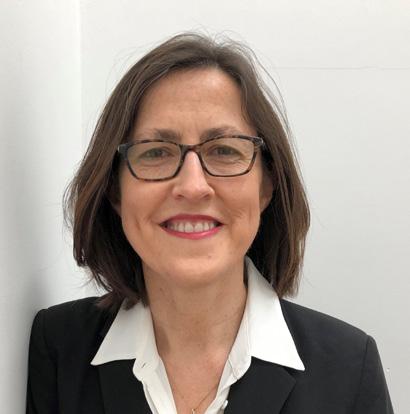
Kim Beswick
Kim Beswick is Head of the School of Education and a Professor of Mathematics Education at the University of New South Wales. Kim’s research interests centre on the beliefs, knowledge, and professional development of mathematics teachers. She is particularly interested in how teachers’ beliefs and knowledge relate to their expectations of and aspirations for their students. Kim was a secondary school mathematics teacher for 13 years prior to joining the academy and served as the President of the Australian Association of Mathematics Teachers (AAMT) from 2012 to 2014. She is now a life member of the AAMT.
The affordances of differentiation
Alex Blanksby, Mathematics Educator & AuthorThinking and learning: children are more alike than different
While each person is unique, human bodies are more like each other than they are different. For instance, if a group of people were to start working out with the same goal of losing weight or gaining muscle, then, overall, their workouts would be likely to look similar, with small reasonable adjustments made on an individual basis. Maybe one person needs more repetitions or less weight than another. Maybe one person cannot perform certain exercises due to an injury.
The same goes for learning. ‘Children are more alike than different in terms of how they think and learn’ (Willingham, 2009, p. 147). When learning new skills, instruction from someone with the desired knowledge of skills, followed by practice recalling the knowledge, the opportunity to apply the skills, and frequent feedback is effective. For example, one student may need more repetition and practice, more explanations, or simpler combinations of numbers in a mathematics problem than another. These adjustments are differentiation, one of the Australian Professional Standards for Teachers (APST): ‘1.5 Differentiate teaching to meet the specific learning needs of learners across the full range of abilities’ (Australian Institute for Teaching and School Leadership, 2017).
Note that the descriptor in the APST says ‘full range of abilities’, not styles. While the varied use of modalities can be effective, for instance when considering dual coding, ‘matching the “preferred”

modality of a student doesn’t give that student any edge in learning’ (Willingham, 2009, p. 156). Cognitive Load Theory also suggests students who are novices with a particular concept or skill will learn more through highly structured teaching, such as by reading worked examples and completing minimally different or partially completed questions, and students who are more expert with a particular concept or skill will learn from less structured teaching such as solving novel problems (Kirschner, Sweller & Clark, 2006).
Differentiation is an important part of a teacher’s toolkit
Differentiation is an important part of a teacher’s toolkit as the variation in ability between students in a single class, even a set or streamed one, can span multiple years. However, a problem with differentiation is that people interpret it to mean different things, and each of those interpretations come with different time costs for teachers as well as impacts for student learning. Differentiation may be interpreted as:
• setting different tasks for different students on the same content
• providing different levels of support to different students on the same task
• giving different students different goals for the same task
• teaching different students, different content
• teaching different students in different ways. Whichever interpretation of differentiated teaching you consider, at least two features cut across them:
1. Unless we are dealing with a single student, we need to differentiate our teaching to manage minor or major differences between students.
2. Teachers need formal or informal data about what their students’ current understanding and skill level is to be able to differentiate effectively.
Differentiation by task
When using different types of differentiation, it is important to consider possible negative consequences that may occur incidentally. When differentiating by task, teachers may underestimate the ability of some students, leading the students to think that their teacher doesn’t believe they can accomplish a harder task. Some students may intentionally do worse on tasks to continue working on easier tasks. If
students choose the task they want to complete, some students may choose simpler tasks to fly under the radar and not need to work as hard. Differentiating by task also means students inherently work on different ideas, so students working on easier tasks will continue to fall further behind students who work on harder tasks that often flesh out ideas more deeply. Differentiation by task also adds to teachers’ workloads as teachers first need to create or source and modify tasks appropriately.
Differentiation to support
In my experience as a secondary mathematics tutor, mostly working with students who need more support, students who are behind their peers need to work harder and do more work to fill gaps and address misconceptions if they want to catch up to their peers. This builds both fluency and conceptual understanding. They often need more concise explanations and to experience success quickly to boost their motivation to continue working harder than they may have been previously. While differentiation by support addresses some of the negatives of differentiation by task by having students generally working on the same task, there are key points that need to be considered. Teachers need to know if all students are prepared to undertake the task using, for instance, short, low-stakes retrieval quizzes on the relevant prerequisite knowledge and skills. They also need to be able to change plans if a significant portion of a class is not prepared while also providing appropriate work, such as retrieval practice, to those who are. Teachers will often need multiple possible explanations to use for any given idea, extra worked examples or questions to provide, as well as ways of extending tasks for those who need to be further challenged or finish early, without the extension being perceived as punishment of more work just for finishing early. Teachers also need to remember to check in with those in the middle who can do the work without extra support but are not at the point of needing extension. Differentiation is an important balancing act


between providing students with the appropriate amount of support, ensuring content and tasks are aimed at the level that is right for them or provided in ways in which they can work on the tasks. The aim is to have a culture of high but manageable expectations such that all students can rise to the task to maximise their learning while minimising teacher workload.
References
Australian Institute for Teaching and School Leadership (AITSL), 2017, Australian Professional Standards for Teachers, https://www.aitsl.edu.au/teach/standards
Kirschner, P. A., Sweller, J. & Clark, R. E., 2006, Why Minimal Guidance During Instruction Does Not Work: An Analysis of the Failure of Constructivist, Discovery, Problem-Based, Experiential, and Inquiry-Based Teaching, Educational Psychologist, vol. 41, no. 2, pp. 75–86
Willingham, D. T., 2009, Why Don’t Students Like School?, Jossey-Bass, San Francisco, CA
Alex Blanksby
Alex Blanksby has worked with students of a wide range of abilities since 2014. He has a focus on helping students believe they are capable of understanding mathematics. Alex believes that while mathematics can be, and often is, hard, those who enjoy mathematics often enjoy it because of the challenge. Alex is the creator of the website Vic Maths Notes, where he has written notes for Victorian Curriculum and VCE mathematics courses, and collected other resources since 2016.
Keeping your hands on maths progression
Annie Facchinetti, Literacy & Mathematics Educator, Xavier Coll egeOne of the many challenges associated with remote learning in 2020 and 2021 was the lack of access for students to resources. Of course, teachers, students and families used their ingenuity to get around this, from making Rube Goldberg machines from household items, to going on virtual voyages to faraway destinations. Despite our best efforts, though, there were some specialised materials that just weren’t able to be used during lockdown, and unfortunately maths is one of the areas that suffered most from this.
The benefits of using concrete materials
Many schools adapted to remote learning in maths by relying more on or switching to online platforms to cover much of the content. For students who love maths or who pick up the underlying concepts quickly, this was a good option. But there is strong evidence that the use of manipulatives is critical to developing understanding of the abstract thinking required for a variety of mathematical processes for many students. For example, a meta-analysis by Carbonneau, Marley and Selig (2013) found that across the board, from kindergarten to university, the use of concrete materials in the teaching of maths improved students’ understanding and also had a positive effect on problem solving and knowledge retention, among other things. Yet, there can be a tendency, especially as students move to the higher years of primary school and then to secondary school, to assume that they are no longer needed.
Maths anxiety
Maths is a subject that is well known for causing anxiety in children and adults alike. With research suggesting that between 6% and 17% of the population suffers from maths anxiety (Dowker, Sarkar & Looi, 2016), it is an issue that teachers need to be cognisant of, particularly as we seek to recover from interruptions to learning in 2020 and 2021. Using hands-on materials can give students confidence to explore maths problems without the fear of getting a written answer wrong, while also allowing them to build more solid understandings of the concepts they are working with. For example, students can model triangular numbers in their right-angled form using interlocking-cubes, then manipulate these representations to explore the relationships between triangular and square numbers. This is equally valuable for able students, who are often expected to grasp abstract concepts without the benefit of these experiences.
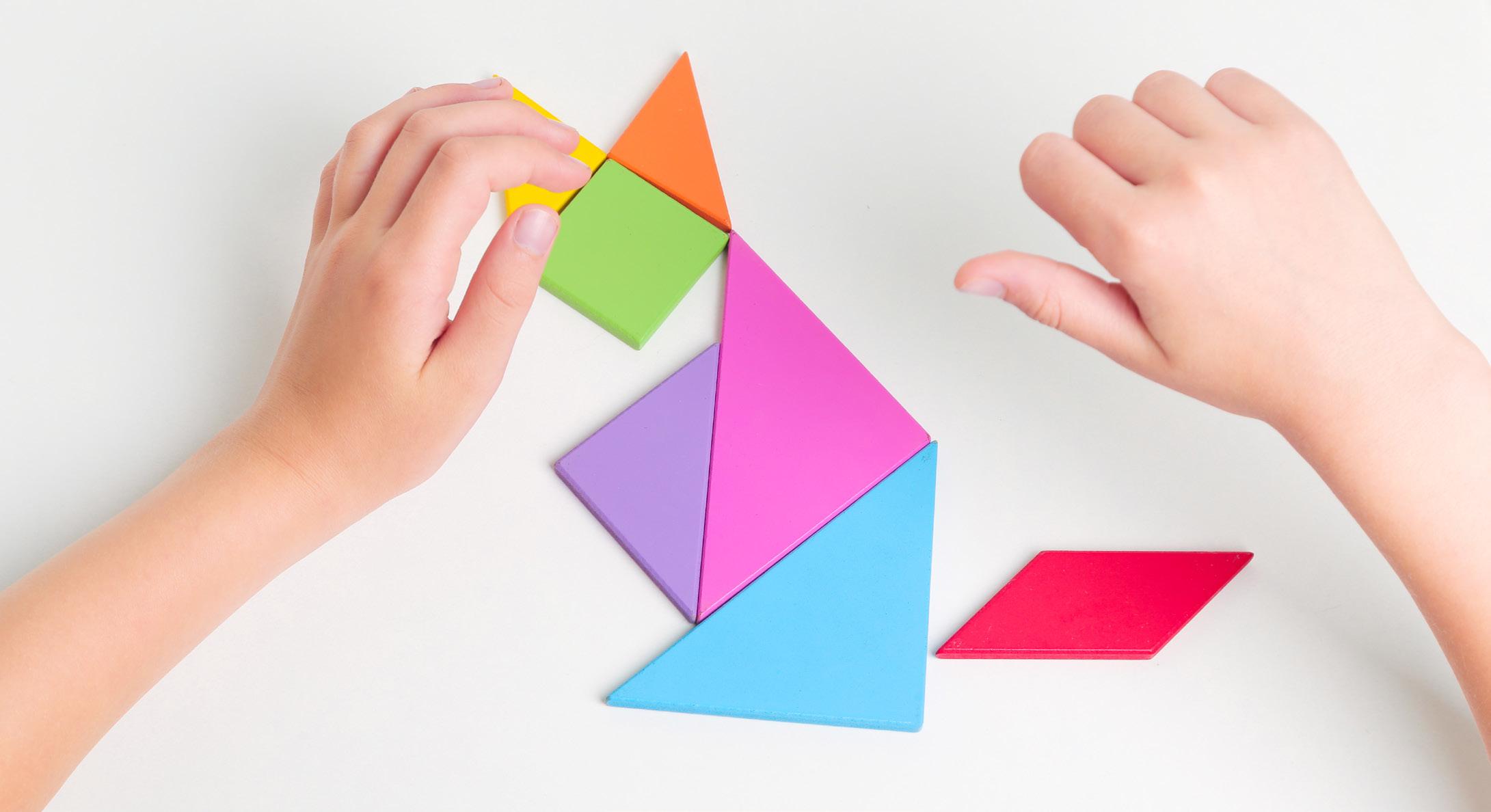
Differentiating needs for different students
A major advantage of using manipulatives from a pedagogical standpoint is that it is easy to quickly adjust an activity to differentiate for the needs of different students. In the example above, you could provide more explicit guidance for those struggling, and extend your capable students to consider the formula for finding the nth triangular number. This approach can be much kinder to students’ self-esteem than giving out worksheets or setting entirely different tasks for groups of students, as all students are still completing what is essentially the same task. Differentiating learning in mathematics has also been shown to be more effective than teaching all students against curriculum expectations (Masters, 2005). It is particularly important in addressing gaps in student understanding that may prevent them from mastering more abstract learning in the same area.
The importance of oral language
Back in 1970, James Britton observed that reading ‘floats on a sea of talk’. It’s a quotation that still resonates today and is often cited to highlight the importance of oral language to literacy learning. I would assert that it is equally important to making sense of and embedding many maths concepts. Using hands-on materials gives students the opportunity to interact with and articulate their learning in a way that paper and pen or online activities simply do not. It is particularly important to remember this as students transition from primary school, where they may be accustomed to using concrete materials frequently, to secondary school, where the expectations may be different.
The progression from concrete to abstract
Of course, ultimately, we want students to be proficient in mathematical thinking, problem solving, and understanding and executing mathematical processes without the use of manipulatives. But the progression from concrete to abstract needs to be carefully considered to ensure that students can explore and demonstrate their understanding in multiple ways. The judicious use of manipulatives right throughout school can be the difference between a lifelong feeling of confusion or inadequacy when it comes to maths, or the development of confidence and understanding as students move through school and into adulthood.
References
Britton, J., 1970, Language and Learning, Coral Gables, University of Miami Press, MIA, Florida
Carbonneau, K. J., Marley, S. C., & Selig, J. P., 2013, A metaanalysis of the efficacy of teaching mathematics with concrete manipulatives, Journal of Educational Psychology, vol. 105, no. 2, pp. 380–400, https://doi.org/10.1037/ a0031084
Dowker, A., Sarkar, A., & Looi, C. Y., 2016, Mathematics anxiety: What have we learned in 60 years? Frontiers in Psychology, vol. 7, article 508
Masters, G. N., 2005, Against the Grade: In Search of Continuity in Schooling and Learning, https://research. acer.edu.au/monitoring_learning/3
Pace, M. H. & Ortiz, E., 2015, Oral language needs: making math meaningful, Teaching Children Mathematics, vol. 21, no. 8, pp. 494-500, doi:10.5951/teacchilmath.21.8.0494

Annie Facchinetti
Annie Facchinetti is a Literacy and Mathematics Educator at Xavier College. She is the lead author of Oxford Maths for Australian Schools and has presented about mathematics pedagogy and approaches at conferences around Australia. Annie also has a Master of Education in Allied School Psychology.
Diverse learners – not the problem, they are the solution!Dr Rhonda Faragher, The University of Queensland
Diverse learners
So often when issues of mathematics education are discussed, diverse learners are raised as a problem. If only students were all the same, all at the same level, all learnt the same way, our problems would disappear. This, of course, has to be nonsense. Clearly humans aren’t all the same, and it is our very diversity that is our strength. Different ways of thinking, seeing the world and approaching issues lead to different ways of learning, strengthening cognitive connections between concepts and deepening our understanding. In mathematics, diverse ways of thinking and learning lead to possibilities for different solutions to problems that matter. Human variation in learning is a given and we need to regard this as a strength.
Inclusive education and the abandonment of streamed classrooms
Diversity in mathematics classrooms is a growing phenomenon based on two key movements: inclusive education and the abandonment of streaming. Inclusive education is a global trend for learners with disabilities and specified in international charters (United Nations, 2006) and national laws, including in Australia (Disability Standards for Education, 2005) and New Zealand (Education and Training Act, 2020) . The research evidence that streamed classrooms is harmful is strong (Hunter, Hunter & Anthony, 2020; Macqueen, 2012). One possible negative impact is that teachers in streamed class contexts assume the work of attending to different levels of attainment is complete, and so attention to supporting and challenging learners may be overlooked.
Taken together, these two movements in education (inclusion and heterogeneous class groupings) have led to greater diversity in mathematics classrooms than ever before. There is good news in this: inclusive, diverse classrooms, where the strengths and learning needs of all learners are acknowledged and supported, lead to improved learning outcomes (Hehir et al., 2016).
Monitoring learning progress
To effectively attend to a diverse range of educational needs in mathematics classrooms, teachers need to monitor closely the learning
progress of their students. This is not to suggest more batteries of tests should be administered to students. Rather, teachers must be affirmed in their ability to closely observe learning in their classrooms and to make professional judgements about the support their students will need. The products of learning, including responses to questioning, solution methods to problem solving tasks and discussions in investigations with peers, are effective methods of assessing learning. Observation of learning leads to awareness of where barriers to learning are occurring, and teachers can plan adjustments to support more effective learning. Enabling prompts (Sullivan, Mousley & Zevenbergen, 2006) are an example of these adjustments, which should not be routinely offered to students expected to find the learning difficult, but as enabling prompts provided at the point where the student has shown they are needed.
When teachers are attuned to the learning exhibited by their students, they generally find the techniques they need to use to meet learning support needs are within their repertoire (Faragher & Clarke, 2020). There are no special strategies that will work for some students and not be of help to others. Teachers will need more than one approach for teaching any topic and this is one of the key reasons why effective teaching in inclusive classrooms leads to improved learning outcomes for all learners. The lesson planning approach known as ‘Universal Design for Learning’ (Rose, Gravel, & Gordon, 2014) explicitly addresses the need for multiple approaches for all aspects of a lesson.
Learning year level adjusted curriculum (LYLAC)
Supporting students who are a long way behind their expected learning milestones is of concern for teachers. Past practice had been to assess learners and teach from that point, leading to unhelpful commentaries such as ‘a typical Year 7 class has an eight-year spread of ability’, assuming ability is fixed and uniform across all areas of mathematics. Of course, a teacher cannot teach separate year levels in every lesson, nor plan individual programs for each student in their class. A more manageable approach is to implement a planning approach called ‘learning year level adjusted curriculum’ (LYLAC; Faragher, 2017). This approach allows teachers to take the content for the year they are teaching and design adjustments to support all learners to be
appropriately challenged. The LYLAC approach has a long pedigree in education (Bruner, 1960, 1977). One widely researched and practised strategy to implement this approach is the use of rich tasks (Sullivan, 2017). Rich tasks allow students to access learning at their level and to be challenged. They also offer the chance to surprise teachers (Russo et al., 2020). Unfortunately, low-attaining students often miss out on opportunities to work on mathematical thinking tasks such as rich tasks, problems and investigations (Tan, et al., 2019).
Recognising all learners as diverse
Far too often, diverse learners, particularly lowattaining students, are regarded as an educational problem. Instead, the recognition of all learners as diverse with learning strengths and support needs brings a teaching mindset that leads to improved outcomes for all. Embracing inclusive mathematics education is a clear solution to problems with perceived issues of skills gaps.
References
Bruner, J. S., 1960, 1977, The Process of Education, Harvard University Press, Cambridge, MA
Commonwealth Department of Employment Education and Training, 2005, Disability Standards for Education 2005 plus guidance notes, Canberra, ACT
Education and Training Act 2020, Pub. L. No. 38, 2020
Faragher, R., 2017, Teaching year level maths, The Common Denominator, vol. 2, pp. 8–9
Faragher, R. & Clarke, B., 2020, Inclusive practices in the teaching of mathematics: some findings from research including children with Down syndrome, Mathematics Education Research Journal, vol. 32, no. 1, pp. 121–46, doi:10.1007/s13394-019-00294-x
Hehir, T., Grindal, T., Freeman, B., Lamoreau, R., Borquaye, Y. & Burke, S., 2016, A summary of the evidence on inclusive education, retrieved from Instituto Alana, http:// alana.org.br/wp-content/uploads/2016/12/A_Summary_of_ the_evidence_on_inclusive_education.pdf
Hunter, J., Hunter, R. & Anthony, G., 2020, Shifting towards equity: challenging teacher views about student capability in mathematics, Mathematics Education Research Journal, vol. 32, pp. 37–55, doi:10.1007/s13394-019-00293-y
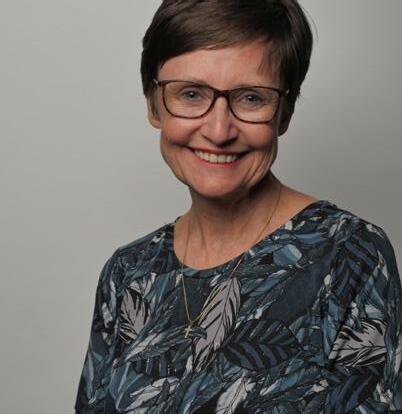

Macqueen, S., 2012, Academic outcomes from betweenclass achievement grouping: the Australian primary context, Australian Educational Researcher, Springer Science & Business Media B.V., vol. 39, no. 1, pp. 59–73, doi:10.1007/s13384-011-0047-3
Rose, D. H., Gravel, J. W. & Gordon, D. T., 2014, Universal Design for Learning, in Florian, L. (Ed.), The SAGE handbook of Special Education, pp. 475–89, SAGE, London
Russo, J., Bobis, J., Downton, A., Hughes, S., Livy, S., McCormick, M. & Sullivan, P., 2020, Students who surprise teachers when learning matheamtics through problem solving in the early primary years, International Journal of Innovation in Science and Mathematics Education, vol. 28, no. 3, pp. 14–23
Sullivan, P., 2017, Challenging Mathematical Tasks: Unlocking the Potential of all Students, Oxford University Press, Melbourne, Victoria
Sullivan, P., Mousley, J. & Zevenbergen, R., 2006, Developing guidelines for teachers helping students experiencing difficulty in learning mathematics. In Grootenboer, P., Zevenbergen, R. & Chinnappan, M. (Eds.), Proceedings of the 29th Annual Conference of the Mathematics Education Research Group of Australasia, pp. 496–503, MERGA, Canberra
Tan, P., Lamber, R., Padilla, A. & Wieman, R., 2019, A disability studies in mathematics education review of intellectual disabilities: directions for future inquiry and practice, The Journal of Mathematical Behavior, Vol. 54, June, 100672. doi:10.1016/j.jmathb.2018.09.001
United Nations, 2006, Convention on the Rights of Persons with Disabilities and its Optional Protocol. Retrieved from http://www.un.org/disabilities/default. asp?navid=15&pid=150
Dr Rhonda Faragher
Dr Rhonda Faragher is the Director of the Down Syndrome Research Program and an Associate Professor in Inclusive Education at the University of Queensland. She is an appointed board member of the Academy on Education, Teaching and Research, part of The International Association for the Scientific Study of Intellectual and Developmental Disability (IASSIDD), and the Co-Editor in Chief of the Journal of Policy and Practice in Intellectual Disabilities. Dr Faragher has received several awards for her work, including the 2020 University of Queensland Staff Award for Excellence in Community, Diversity and Inclusion.
The importance of being successful in mathematics
Patrick Mete, Haileybury CollegeWe need students to feel that they have been, that they are, and that they will be successful in mathematics. It is our responsibility, as teachers, to orchestrate opportunities for mathematics learners to be successful as often as possible. Given the documented tensions and constraints that mathematics teachers face, the following offers practical suggestions for leaders and teachers on how to effectively implement retrieval practice in the classroom, with the goals of achieving success for students and the longterm learning of core mathematics skills and concepts.
Firstly, let’s establish the format. Many teachers already employ some variation of retrieval practice in their classroom, usually in the form of quizzes, flashcards, games, knowledge organisers or ‘exit tickets’; however, this article spotlights start-of-lesson quizzes as a driver for success, long-term retention of mathematics skills and concepts, and their comprehensive implementation in your classroom.
• Consistency: Introduce retrieval practice quizzes at the beginning of classes, as often as possible. Decide on your consistent format (questions pre-printed on paper, questions online, questions written on the board and attempted in books) and what works best for you in your context.
• Time efficiency: The idea is for starter quizzes to become a 3–7-minute routine, without dominating whole lessons. Time will vary depending on the content you are asking students to recall and students’ prior knowledge. Six questions per quiz is ideal.
• Involvement: All students should check their knowledge. There are three phases for students: attempt, self-correct, and resolve (discussed later in more depth).
• Quiet time: Recalling information is inherently difficult for learners and requires concentration. Expect that ‘quiz time is quiet time’. It is not appropriate to ask questions of peers, to ask questions of you, or to look at books for answers: the learner’s sole focus is attempting, reviewing, and resolving the retrieval practice quiz. That includes removing distractions by the teacher, also!
• Include feedback: As a principle, ensure that self-correction is easily accessible by including your worked solutions. Starter quizzes can be conducted on double-sided paper with worked solutions on the back for selfcorrection. If stumped for preparation time, write questions on the board that students complete in their exercise books, and begin
writing up solutions for students to self-correct when appropriate (take a photo of the board and save it in a folder, to know what retrieval practice students are building upon). There are numerous online platforms to deliver and organise quizzes; just note the importance of accessible worked solutions that set the ideal standard of response. Student self-correction using your worked solutions is quicker, minimises the need for discussion, and allows students to focus on their learning, helping to build their capacity for selfassessment.
• Teacher time efficiency: Starter quizzes are not meant to dominate the lesson. This method does not require the teacher to check students’ answers. In fact, as a maximum include one question that requires discussion (usually, aim for zero). Emphasise the student actions to attempt, review and resolve the quiz. Set a timer and, as the routine develops, aim to bring the starter quiz down to 3–7 minutes from start to self-correction.
• Low-stakes quiz: Remind students that there is no risk involved: there are no marks recorded, results are not sent to parents. Students just need to do their best to recall the mathematics skills being asked as they attempt to replicate your worked solutions. Offer the challenge to students: ‘Your challenge is to have the exact same working that I do. When you correct your answers, if your working looks the same as mine, give yourself two big ticks’.
• Content goal: The deliberately designed quiz questions should aim to activate prior learning at the moment that you know your students need it. As success is the goal, questions should focus on asking students to recall baselevel mathematics content and procedures.
• Writing questions for success: This is our goal! To facilitate success, the format and questions need to be deliberately chosen and built upon each time. Examples have been included below to show how these questions progress from day one onwards. The intention of each question will vary: the first two questions are retrieval of skills/concepts that you would like to review over the longer term (number/ fraction/place value/algebra questions are perfect here), while remaining questions can relate directly to content taught recently and that is vital to their understanding of the topic being covered or today’s lesson.
Day 1 (skill/concept initially reviewed) – Addition and Subtraction of Fractions
1. Evaluate the following, showing all working.
Day 2 (previous quiz reminded the learner to simplify fractions where possible)
1. Evaluate the following, showing all working.
10. Ease of continuity: Make maintaining teacher documentation easy. The starter quizzes should build upon each other, deliberately spaced to ask questions of students just before they forget that content, and they need a reminder. Additionally, we want to build upon resources year-to-year. Regardless of the delivery format, organise and name each quiz as you go (e.g. ‘Year 5 – Term 1 – Week 6 – Number - Times tables and division, addition of three-digit numbers, finding multiples and factors’, reflecting the time and content covered).
is 12
2. Find the Lowest Common Multiple (LCM) of: (a) 3 and 4 (b) 4 and 8
Multiples of 3 : 3, 6, 9, 12, 15, ...
4 : 4, 8, 12, 16, ...
LCM is 8
Multiples of 4 : 4, 8, 12, 16, 20, ...
8 : 8, 16, 24, 32, ...
Day 3 (question 2 of the previous quiz recalled LCM, a necessary skill for making denominators the same when adding/subtracting fractions)
1. Evaluate the following, showing all working.
11. Student actions: Students are expected to attempt, review, and resolve each quiz in a timely fashion. When students review their answers, emphasise the role of your worked solutions; differences between student responses and your worked solutions should be realised and adapted for next time. In order to improve their responses on later quizzes, students will have to improve their capacity to ‘resolve’ their incorrect responses, find out why their answer is incorrect and identify the knowledge they were missing. This will require thought and support. Set the standard that questions that aren’t understood aren’t left behind: ‘It’s your (the student ’s) responsibility, your duty, to resolve a question if you don’t understand it. That may be as simple as seeing the answer and understanding it straight away, or asking a friend, or a parent, or me (the teacher) at an appropriate time (after the lesson, at home, in an organised catch-up during a break). Importantly, we don’t leave questions that we don’t understand behind.’
Day 4 (previous quiz reminded the learner to make denominators the same when adding fractions)
1. Evaluate the following, showing all working.
12. Formative assessment: Retrieval practice is a learning activity; however, this retrieval practice may allow you to formatively assess student understanding, which is necessary for the deliberate construction of your quiz questioning sequences. Routine quizzing comes with other benefits, including the time to walk around and see student responses; the opportunity to quickly suggest improved approaches to specific students; and the an improved understanding of where your students are at in their learning.
Aim for an upward trend in success and, consequentially, ongoing student achievement and engagement.
 Patrick Mete
Patrick Mete
Patrick ‘Patty’ Mete is a mathematics teacher, mathematics curriculum and learning expert, and mathematician. He has taught Year 5 to university mathematics as a mathematics teacher at Haileybury and a teaching associate at Monash University. Patrick completed his Honours in Mathematics in the field of Probability Theory and Stochastics.
Incorporating mathematical challenges into teachers’ repertoires
Peter Sullivan, Emeritus Professor, School of Curriculum Teachi ng and Inclusive Education, Monash UniversityA common approach to mathematics lessons involves the teacher modelling a procedure after which students practise what they have been shown. One of the risks when teachers only teach this way is students can become dependent on the teacher and reluctant to think for themselves. It is desirable that this approach to teaching be supplemented with structured inquiries in which students work, prior to any instruction, on tasks which are productively challenging for them.
A task or problem is challenging if students do not know initially how to proceed, have not been told how to do so by the teacher, and are expected to make decisions on solutions or solution strategies for themselves. Many mathematics concepts are difficult to understand, at least initially, and so students benefit when they persist with concepts and tasks, which include concentrating, applying themselves, believing they can succeed, and connect effort with learning. The tasks and lessons likely to foster such actions are termed challenging in that they allow the possibility of sustained thinking, decision making and some risk taking by students. The Organisation for Economic Co-operation and Development (2014) used the term ‘cognitive activation’ to describe such challenges and referred to the benefits of posing tasks that take time, for which the solution path is not obvious, and which create opportunities for students to learn from mistakes. Christiansen and Walther (1986) argued that the interplay between different aspects of learning inherent in non-routine tasks (so called because the solution is not solved by a routine known by the students), provide ideal conditions for cognitive development in that new knowledge is constructed relationally, and items of earlier knowledge are used and consolidated. Challenge comes when students do not know how to solve tasks and work on tasks prior to teacher instruction. Other characteristics of such tasks are that they:
• build on what students already know
• take time

• are engaging for students so that they are interested in and see value in persisting with a task
• focus on important aspects of mathematics (hopefully as identified or implied in relevant curriculum documents)
• foster connections within mathematics and across domains.
An example of a task that may be productively challenging for middle years students is as follows:
Five friends shared all this chocolate (a diagram of a rectangular block, 5 squares long and 4 squares wide is given), but they each got different parts of the whole. Describe, using decimals, what parts of the chocolate each of them might get. Give as many different possibilities as you can.
At one level, a student might arrive at a solution of 0.2, 0.3, 0.5. But there may be students who find a range of solutions, some of which use hundredths such as 0.05, 0.1, 0.85, etc.
So the task requires students to use decimal fractions to represent possibilities, but it also gives them opportunities to seek patterns, to record responses systematically and even to generalise solutions. The advantage of such tasks is that students choose the level of complexity of the solution and the strategy to solve it, thereby building robust understanding for themselves. The role of the teacher is to orchestrate discussion of successful strategies and to systemise the insights from the students.
References
Christiansen, B. & Walther, G., 1986, Task and activity, in Christiansen, B. Howson, A. G. & Otte, M. (Eds.), Perspectives on Mathematics Education, pp. 243–307, Reidel, Holland
Organisation for Economic Co-operation Development, 2014, Do students have the drive to succeed? PISA in Focus, no. 37, OECD Publishing, Paris
Peter Sullivan
Peter Sullivan is an Emeritus Professor of Science, Mathematics and Technology Education at Monash University. He has extensive experience in research and teaching in teacher education. He was a member of the Social, Behavioural and Economic Sciences panel of the Australian Research Council College of Experts from 2005 to 2008 and was an editor of the Journal of Mathematics Teacher Education for 8 years. He is a past President of the Australian Association of Mathematics Teachers and was the lead writer of the Australian Curriculum: Mathematics.
The importance of differentiating mathematics teaching for individual learning needs
Simone Zmood, Monash UniversityTeachers, parents and students realise that there are differences between students in any mathematics class in terms of the students’ mathematics knowledge, skills and readiness to learn. These variations can be substantial, with educators mentioning up to eight years of difference in readiness to access learning and achieve. Some students can have significant gaps in knowledge and struggle to learn new content, whereas others may have already mastered the key ideas in the intended mathematic curriculum for the year. These variations underpin the importance of differentiating or personalising mathematics teaching by considering students’ readiness to learn and preferred ways of learning (see Smith, 2017; Tomlinson, 2001, 2014). This paper is divided into three parts. In the first section, I present some ways of thinking about, and exploring, individual learning needs. Next, I share some ways of differentiating mathematics teaching based on identified learning needs. Last, I include some questions for you to reflect upon and discuss with your teaching colleagues.
Understanding individual learning needs
A model developed by Lannie Kanevsky (1995) provides a useful framework for thinking about the combination of factors that influence students’ success in mathematics learning. Kanevsky claimed that learning potential is a dynamic interaction of two internal factors (intellectual and non-intellectual) and one external factor (environmental). A student’s

intellectual potential is based on the intersection of three intellectual factors: current mathematics knowledge, information processing efficiency and metacognition. Non-intellectual factors can have a major impact on mathematics learning, especially feelings, interests and attitudes towards mathematics. Also important are a student’s global self-concept as a learner, and mathematics self-perceptions. Environmental factors include the influence of people, the physical learning environment, the teacher’s classroom management and class dynamics. These internal and external factors interact to enhance or inhibit learning potential for each student in the class.
Getting to know each student’s learning preferences
Getting to know each student in your class is a useful first step. You can seek student feedback on a particular lesson or topic by using exit notes or some other mechanism for written responses. However, don’t underestimate the power of talking with students and asking their perspective on the best ways for them to learn. When teacher–student rapport is established, students may be frank about how they like to learn in terms of lesson structure (e.g. explore first vs instruction first, proportion of time devoted to theory vs practice), and student interactions (e.g. working individually vs in a group, how a group is selected) (see Kanevsky, 2011). A simple conversation can reveal much about a student’s confidence, motivation, personal interests, family, home environment, peer relationships and valuing of mathematics.
Getting to know each student’s current mathematics knowledge
Pre-assessing students’ current mathematics knowledge will provide useful input into lesson planning, unit planning and decisions about differentiation. Traditional tests can give an indication of what individual students know, but often do not provide insight into the causes of errors.
One-on-one interviews (e.g. Victoria’s Mathematics Online Interview, and Fractions and Decimals Online Interview) can provide more detailed information on a student’s mathematical
understanding mapped to key growth points in the curriculum. Classroom discussions can provide a mechanism for organic brainstorming of group knowledge. Mind maps are a quick and easy way of asking individual students to identify their mathematics knowledge on a topic, and to illustrate how the mathematics concepts are connected. Writing up a problem solution in a mathematics journal can provide sufficient detail to highlight a student’s disposition to think mathematically and skill at communicating their mathematics reasoning. Additionally, preassessing students’ interests can help identify contexts for personally meaningful applications of the mathematics in an upcoming topic.

Assessments designed to identify the causes of student errors are useful (see Hansen, 2017). Student errors can be due to gaps in knowledge, problematic work habits or memory retrieval issues. Gaps in the expected knowledge base might hinder a student’s construction of new understanding. These gaps in knowledge can occur through not mastering a mathematics concept when it was taught or missing the teaching of some content (e.g. being absent from school or moving to a school with a different implemented curriculum). In my work with struggling and exceptional students, as well as pre-service teachers, some common problematic work habits that I have observed include: regular mistakes with negative numbers, errors transcribing an answer from the calculator to the page, incorrectly copying details from one line of working to the next, and not decoding a worded question accurately. Once patterns in work habits that lead to mistakes are identified, strategies can
be put in place to reduce errors and thus reduce the associated student frustration with so-called ‘silly mistakes’. A good understanding of these internal and external factors can be used to guide pedagogical decisions.
Ways to differentiate mathematics teaching and learning
Differentiated teaching is proactive, organic and student centred. It involves a variety of wholeclass, group and individual interactions. The first step is to articulate overall goals, lesson goals and individual student goals, related to conceptual understanding and procedural fluency, as well as problem solving and mathematical reasoning:
• If a key goal is mastery of the mathematics curriculum for the relevant year level, then it is important to ensure that all expected prior knowledge is in place to facilitate success in learning the intended curriculum. Hence, analysis of a student’s errors can lead to an understanding of any gaps in knowledge and any misconceptions that need to be addressed.
• If a key goal is that each student makes a year’s worth of learning progress in one school year, as recommended in the Gonski 2.0 report (Gonski et al., 2018), then it is important to understand each student’s current mathematics knowledge relative to the curriculum and their information processing efficiency (or Zone of Proximal Development, as coined by Vygotsky, 1978).
A student’s information processing efficiency will influence how quickly they can absorb new mathematical ideas, notice patterns, and start to generalise concepts. Changes can be made to the mathematics content, teaching and learning process, learning products, and learning environment to meet the diversity of student needs within a class. Each of these dimensions is discussed in more detail.
Differentiating content, process, and learning environment
An understanding of individual learning needs will guide decisions on differentiating content and process. Students who have gaps in knowledge due to lack of exposure to mathematical concepts are likely to benefit from a simple but structured introduction to these ideas. However, if the gaps in knowledge are due to a lack of conceptual understanding after previous exposure, then it is helpful to teach the key mathematics ideas using different approaches (e.g., interpretations, representations) until understanding is attained.
• Differentiation can be delivered through extension of the current topic for students who have already mastered the intended mathematics topics under focus with more depth and complexity by encouraging students to make, break and refine conjectures.
• Although the mathematics concepts in the Australian Curriculum: Mathematics (Australian Curriculum, Assessment and Reporting Authority [ACARA], 2015) are set out in a sequential manner, there is scope to differentiate through breadth. Rich learning activities can provide students with opportunities to make connections between different mathematics ideas related to a topic, or across different areas of mathematics. Mathematics activities can be situated within contexts that are relevant to students’ personal experiences or interests. Rich learning activities often allow students to engage with multiple mathematics concepts at the same time.
• Collaborative learning processes are supportive of students’ conceptual development. A variety of different teaching and learning processes should be considered, and these processes can be tailored for wholeclass, small-group and individual interactions.
• A range of different materials should be used to help students make links between concrete and abstract mathematical thinking, including manipulatives, technology and real-world objects.
A traditional mathematics lesson often consists of whole-class instruction followed by individual practice. Alternative lesson structures, such as the ‘sandwich’ lesson (i.e. exploratory task, discussion, consolidation task), can be easily differentiated and can promote active learning (see Smith & Stein, 2018; Sullivan, 2018).
Rich mathematics tasks
Rich mathematics tasks usually provide scope for students to demonstrate creativity in problem finding, problem posing and problem solving. A ‘low floor, high ceiling’ task enables all students to engage in mathematical thinking and learning at their own level – with the support of an enabling prompt, or the challenge of an extending prompt, from the teacher (see Sullivan, 2018). In this way, teachers do not need to write multiple lesson plans to differentiate learning for the different students in their class. Rich mathematics tasks are open in the beginning, middle, or end:
• Open-middle tasks with multiple solution pathways enrich whole-class discussions when students share their solution strategies and compare the effectiveness, efficiency and elegance (the 3Es) of each approach.
• Open-ended tasks require students to demonstrate their mathematical reasoning when explaining the assumptions that led to different solutions.
One central task may be used for all students in one lesson, whereas it may be more appropriate to have several ‘different level’ tasks for students to choose from in another lesson (see Small, 2017). Differentiating the teaching and learning process helps support the development of the mathematics proficiencies in the Australian Curriculum: Mathematics. Differentiating the learning environment can be integral to successfully differentiating the processes used. The layout of student workspaces in a classroom may limit learning in groups or limit the types of materials with which students can work.
Differentiating products
The most common learning resources that I have observed in mathematics teaching are tests and worked solutions to exercises. However, many other learning resources can be considered such as a problem-solving journal, mathematical model, physical display, technology-based output, or presentation on a mathematical investigation of a real-world problem. Utilising a wider range of learning products provides scope for students to demonstrate varying levels of complexity in their learning, with potential for more depth and breadth than on tests.
Concluding thoughts
All students come to class with different knowledge and ways of learning, and they may leave a lesson with different learnings. It is incumbent on teachers to decide what mathematical knowledge and skills are critical for each student’s success in the current year, and what is critical for future progress. Grounding differentiation decisions in this broader chronological view of student learning means that some students may need to spend more time on their mathematics learning than other students in order to master the expected mathematics curriculum. Alternatively, it may mean that selected content will be de-emphasised for some students so that these students can focus on mastery of key mathematics concepts that are required prior knowledge for future years of mathematics learning. These are decisions that need to be made as a school, with teachers of different year levels collaborating to identify the approach that best suits the school collectively and individual students.
Psychosocial coaching may be needed to help some students build up their confidence with mathematics and learn to persist when facing challenging tasks. Sensitivity to different student backgrounds, cultural capital and family mathematics resources can inform these decisions. The joys of differentiated teaching are in watching each student’s excitement as they experience an ‘Aha! moment’ in their mathematics learning during the year, and in knowing that each student believes that they can ‘be good’ at learning mathematics.
Reflect and discuss with your colleagues
• What do we know about each student in our class? (i.e. background, mathematics competency, learning confidence)?
• What insights can we gain about students’ mathematics learning, individually and collectively, from the information that we currently collect?
• Can we modify current information gathering methods to gain more insight, or do we need additional assessments?
• What are the reasons for any gaps in a student’s mathematics knowledge and skills? What differentiation and/or support can we offer to fill these gaps?
• What level of extension might some students need? How can this be built into a differentiated lesson plan?
• What mathematics knowledge and skills are essential for successful learning this year, and next year?
• Does the student come from a family that is able to support their mathematics learning? If not, then school provisions are essential.
• What differentiation provisions can be offered in the classroom?
• What schoolwide provisions can be offered? For example, some schools offer mathematics homework clubs to provide students with extra time and support.
References
Australian Curriculum, Assessment and Reporting Authority, n.d., Australian Curriculum: Mathematics, key ideas, https://www.australiancurriculum.edu.au/f-10curriculum/mathematics/key-ideas/
Australian Curriculum, Assessment and Reporting Authority, 2015, Australian Curriculum: Mathematics, sequence of content, https://www.australiancurriculum. edu.au/media/3680/mathematics_-_sequence_of_content. pdf
Gonski, D., Arcus, T., Boston, K., Gould, V., Johnson, W., O’Brien, L., Perry, L. & Roberts, M., 2018, Through Growth to Achievement: Report of the Review to Achieve Educational Excellence in Australian Schools, Commonwealth of Australia, https://docs.education.gov.au/system/files/doc/ other/662684_tgta_accessible_ final_0.pdf
Hansen, A., 2017, Children’s Errors in Mathematics (4th ed.), SAGE, New York, NY
Kanevsky, L., 1995, Learning potentials of gifted students, Roeper Review, vol. 17, no. 3, pp. 157–63, https://doi. org/10.1080/02783199509553650
Kanevsky, L., 2011, Deferential differentiation, Gifted Child Quarterly, vol. 55, no. 4, pp. 279–99, https://doi. org/10.1177/0016986211422098
Small, M., 2017, Good Questions: Great Ways to Differentiate Mathematics Instruction in the Standards-Based Classroom (3rd ed.), Hawker Brownlow Education, Cheltenham, Victoria
Smith, M. S. & Stein, M. K., 2018, 5 Practices for Orchestrating Productive Mathematical Discussions (2nd ed.), National Council of Teachers of Mathematics, Reston, VA
Smith, N. N., 2017, A Mind for Mathematics: Meaningful Teaching and Learning in Elementary Classrooms, Hawker Brownlow Education, Cheltenham, Victoria
Sullivan, P., 2018, Challenging Mathematical Tasks: Unlocking the Potential of all Students, Oxford University Press, Melbourne, Victoria
Tomlinson, C. A., 2001, How to Differentiate Instruction in Mixed Ability Classrooms (2nd ed.), Association for Supervision and Curriculum Development (ASCD), Alexandria, VA
Tomlinson, C. A., 2014, The Differentiated Classroom: Responding to the Needs of all Learners (2nd ed.), Association for Supervision and Curriculum Development (ASCD), Alexandria, VA
Vygotsky, L. S., 1978, Mind in Society: The Development of Higher Psychological Processes, Harvard University Press, Cambridge, MA
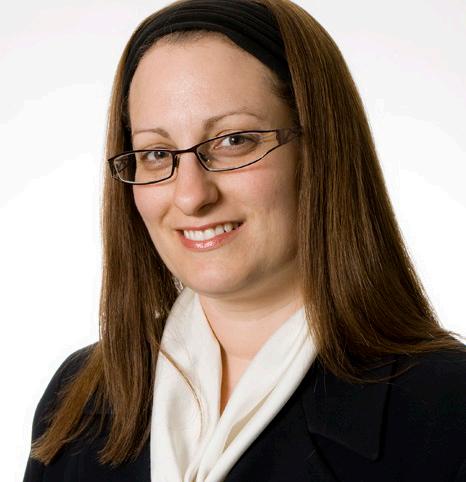
Simone Zmood
Simone Zmood has been consulting in education and business for over two decades, with experience in training pre-service teachers, teachers and executives. She is a Numeracy Advisor and a Teaching Associate at Monash University, and is currently completing her doctorate exploring mathematics talent development in Australia. Simone teaches initial teacher education units in secondary mathematics, numeracy, social justice and new pedagogies. She has contributed to mathematics curriculum and research consultancies for Australian government agencies.
Building confidence using formative assessment
Morgan Levick, Mathematics Teacher, Nossal High SchoolI spent much of the last two years at home teaching teenage boys remotely online. I have therefore become well acquainted with my study, my computer and the confusing world of Gen Z internet slang!
Remote learning impacted student outcomes and has left gaps in knowledge and skills
In early 2021, mid-way through the COVID-19 pandemic, Oxford University Press surveyed Australian educators and discovered that the majority (94%) observed a knowledge and skills gap in students’ learning of mathematics following their transition from primary to secondary school. Once in secondary school, educators surveyed also claimed that this gap continued to widen, and the size of the gap ranged from one to more than years. Responses to the survey indicated that COVID-19 and remote learning exacerbated gaps in learning, and 73% of teachers claimed that COVID-19 and remote learning had an impact on students’ progress, with more than 80% having observed negative impacts on learning. During the COVID-19 lockdowns and the necessity to teach and learn remotely, achievement levels of my students were down and, generally, classes
performed worse on common assessment tasks than previous cohorts. For me, early assessment of my students’ progress left me with no doubt that remote learning was impacting their learning and risked widening gaps in knowledge and skills, so it was important to identify the potential reasons and address the issues.
Identifying the gaps
Teaching remotely online certainly posed a lot of challenges and problems, but it also afforded some rare opportunities. Rather than spending my time at home being bitter about the predicament, I tried to embrace the challenge and use it to become a better teacher. I could have tried in vain to replicate an in-person class setting, hoping the lockdowns would end swiftly and we could get back onsite before too much damage was done. But, as an adherent of the stoics, I chose to view these obstacles as advantages. For every negative of remote learning, there is a positive: it is more difficult to know where your students are at with their learning, but I discovered that there are plenty of online resources for learning and assessment that can be shared with students, which is helpful for both remote learning and learning in class.
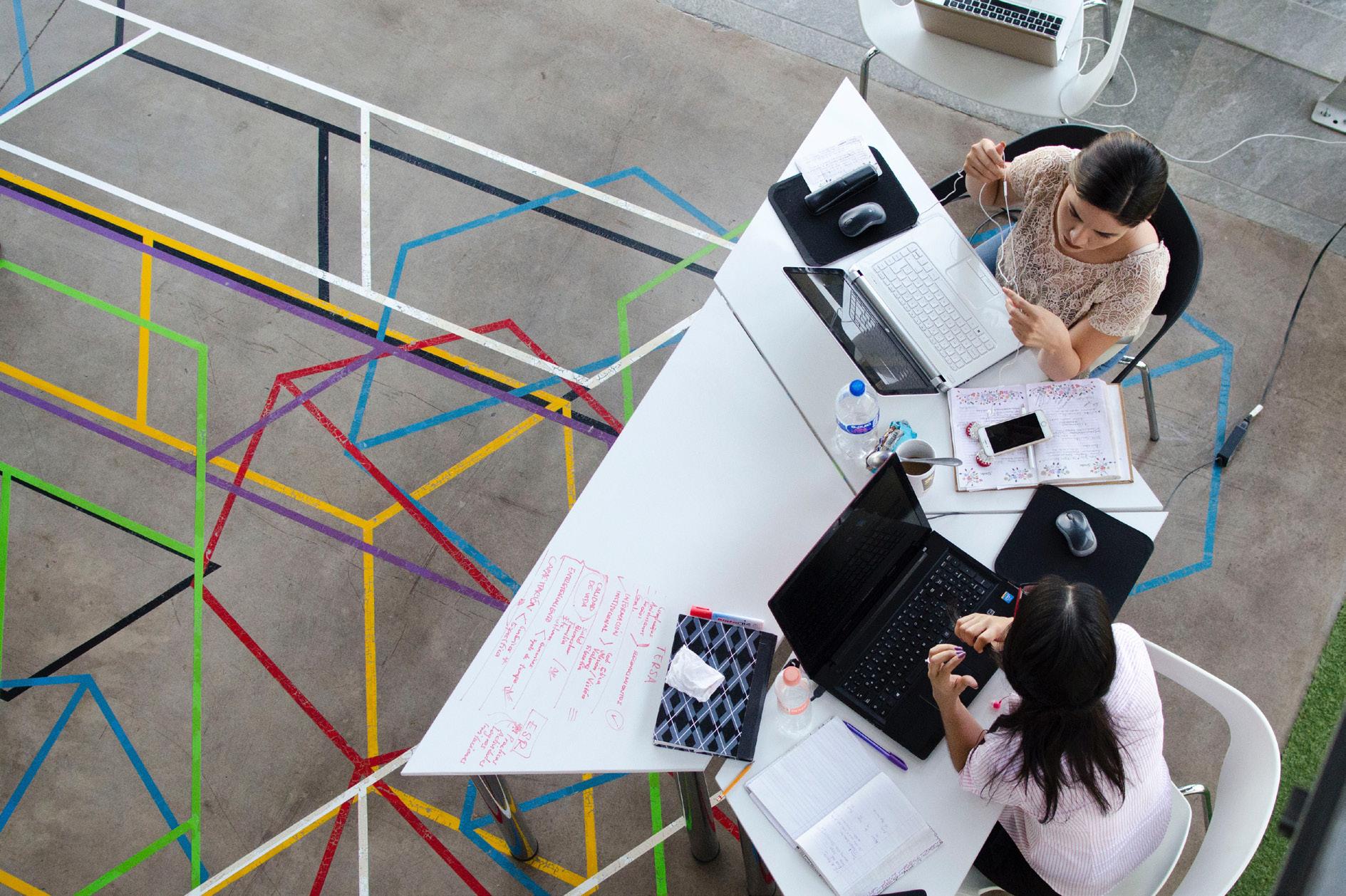
Using formative assessment to help close the gaps
Formative assessment is an extremely useful tool to help gauge the stage of learning students are at, rather than assuming their level. I have been using formative assessments since I started teaching, but they were important for ensuring remote learning was the best it could be for my students, and they continue to be important since we returned from remote learning.
Topic pre-tests
Curriculum pressure means that teachers often feel that formative assessment takes up too much of the class time that we need for content delivery and practice. However, a quick test when starting a new topic means that the topic can be taught with more purpose and direction. Conducting a pre-test also gives students a chance to see their progress and to compare their achievement on a post-test with their own level of understanding before the topic, rather than only comparing their performance on summative assessment tasks with their peers. Considering that remote learning has likely increased the range of student achievement, it is more important than ever to redirect a student’s focus to their own learning and their own individual progress.
Warm-up-questions
A less formal and less time-consuming way to conduct formative assessment is with warmup questions. I start every class with a warm-up question written on the board, ready for when students walk into the classroom. This is especially useful for periods immediately after recess and lunch, when students arrive to the classroom with varying levels of punctuality and enthusiasm.
Warm-up questions usually cover a topic we have just learned in the lesson immediately prior. They can be basic questions that take only a minute or two, or they can be more nuanced complex problems that require students to apply their knowledge and skills to a novel situation. There have been times when students having difficulty with a simple warm-up question tells me that I need to go over a concept again, and this kind of immediate feedback is invaluable to a teacher.
Build confidence using formative assessment
The best advice I have been given in my career is to be an adaptive teacher. It is important to go into classes with a lesson plan and learning objective, but sometimes you need to be flexible and adjust to best meet your students’ learning needs. If students are not accessing a lesson because of a gap in their knowledge, then it is pointless to persist. The problem with being adaptable, though, is that it requires a great deal of confidence, and the way I build my confidence is to ensure I’m being consistent with using formative assessments to understand where my students are at with their learning.
Two years of remote learning have shown me that sticking to rigid plans is not tenable, and so, whether life (and teaching) goes back to normal, employing formative assessment techniques to continue to build our confidence ensures we can adapt to whatever comes our way, and they also build your student’s confidence. I use formative assessment for ongoing, immediate feedback, which helps me confidently teach with both purpose and direction.
 Morgan Levick
Morgan Levick
Morgan Levick is a senior mathematics teacher and coordinator of Mathematical Methods at Melbourne High School. He studied at the University of Melbourne where he completed a Bachelor of Science, specialising in pure mathematics and discrete mathematics, and an Advanced Graduate Diploma in operations research. Morgan has recently been authoring problems and reviewing chapters for the latest series of Oxford Maths 7-10. Morgan has a keen interest in probability and mathematical programming.




